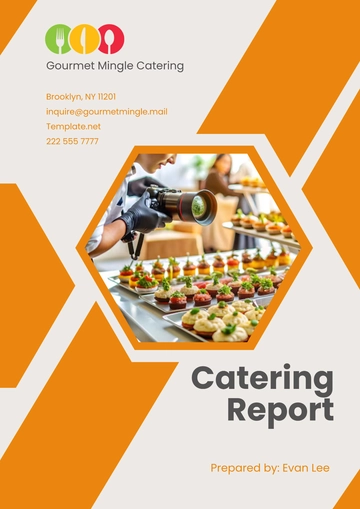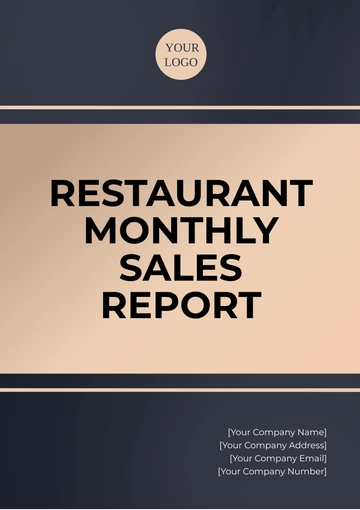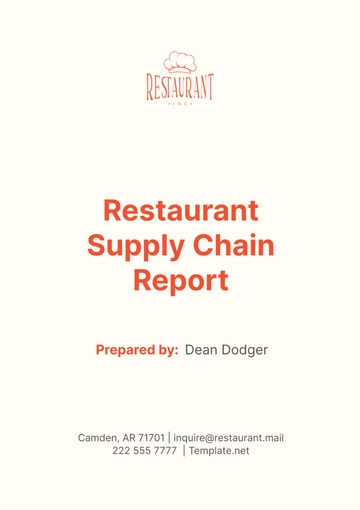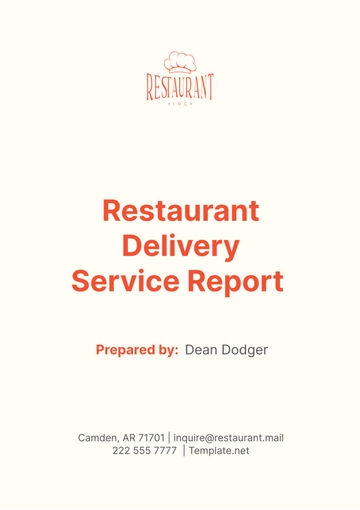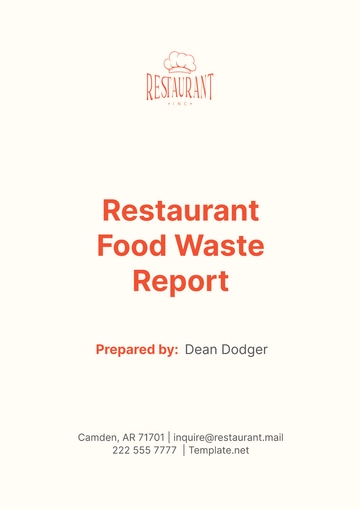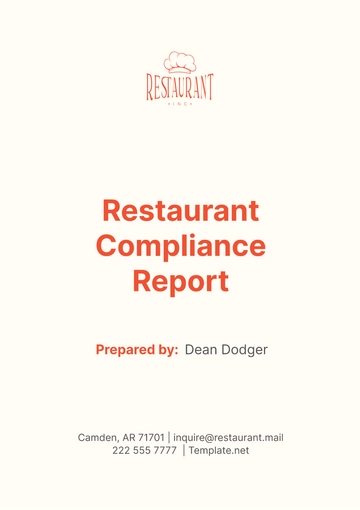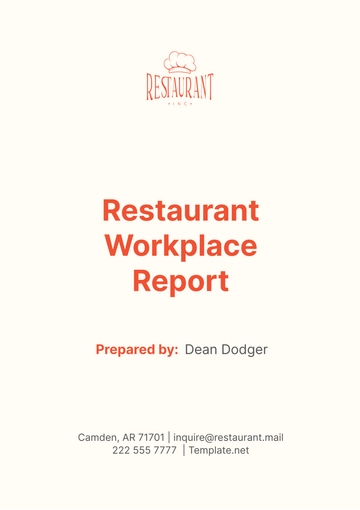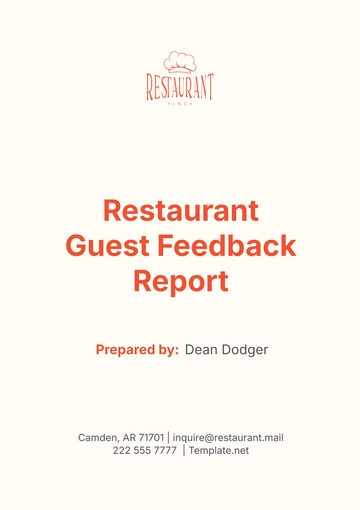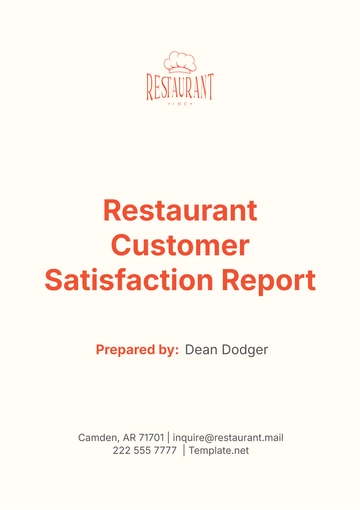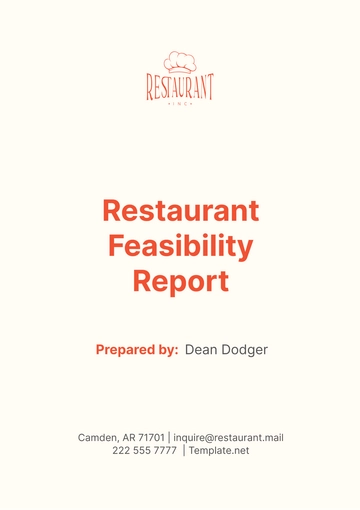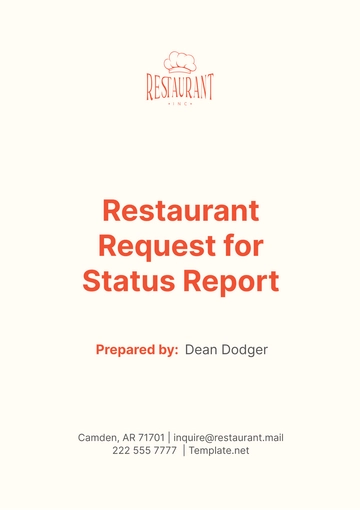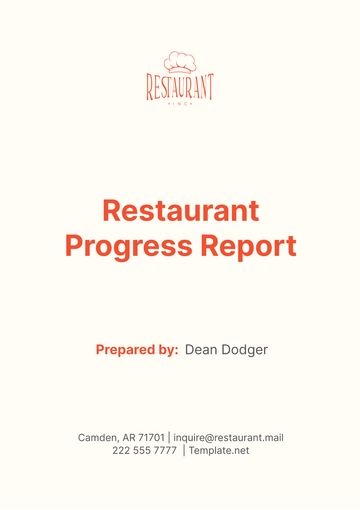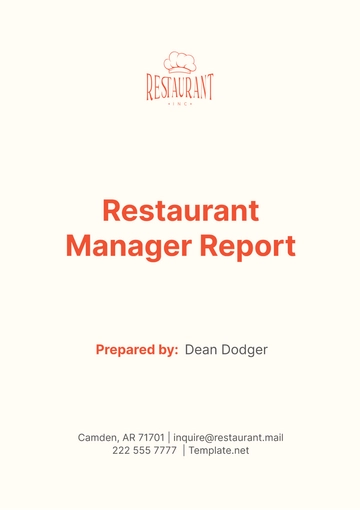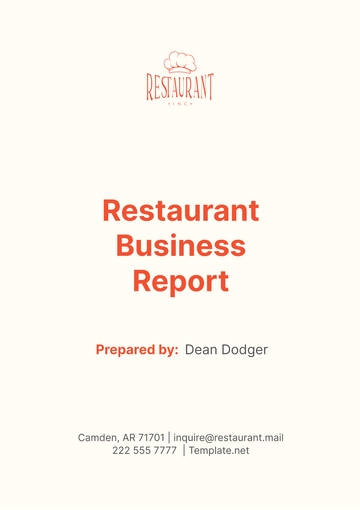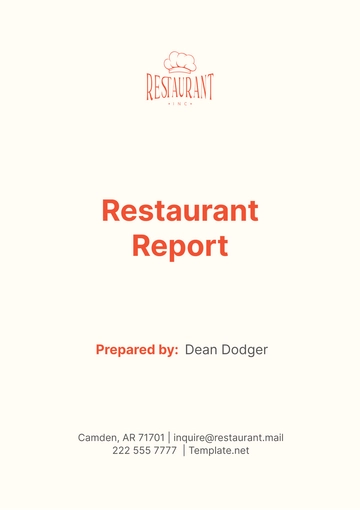Free Restaurant Manager Weekly Report
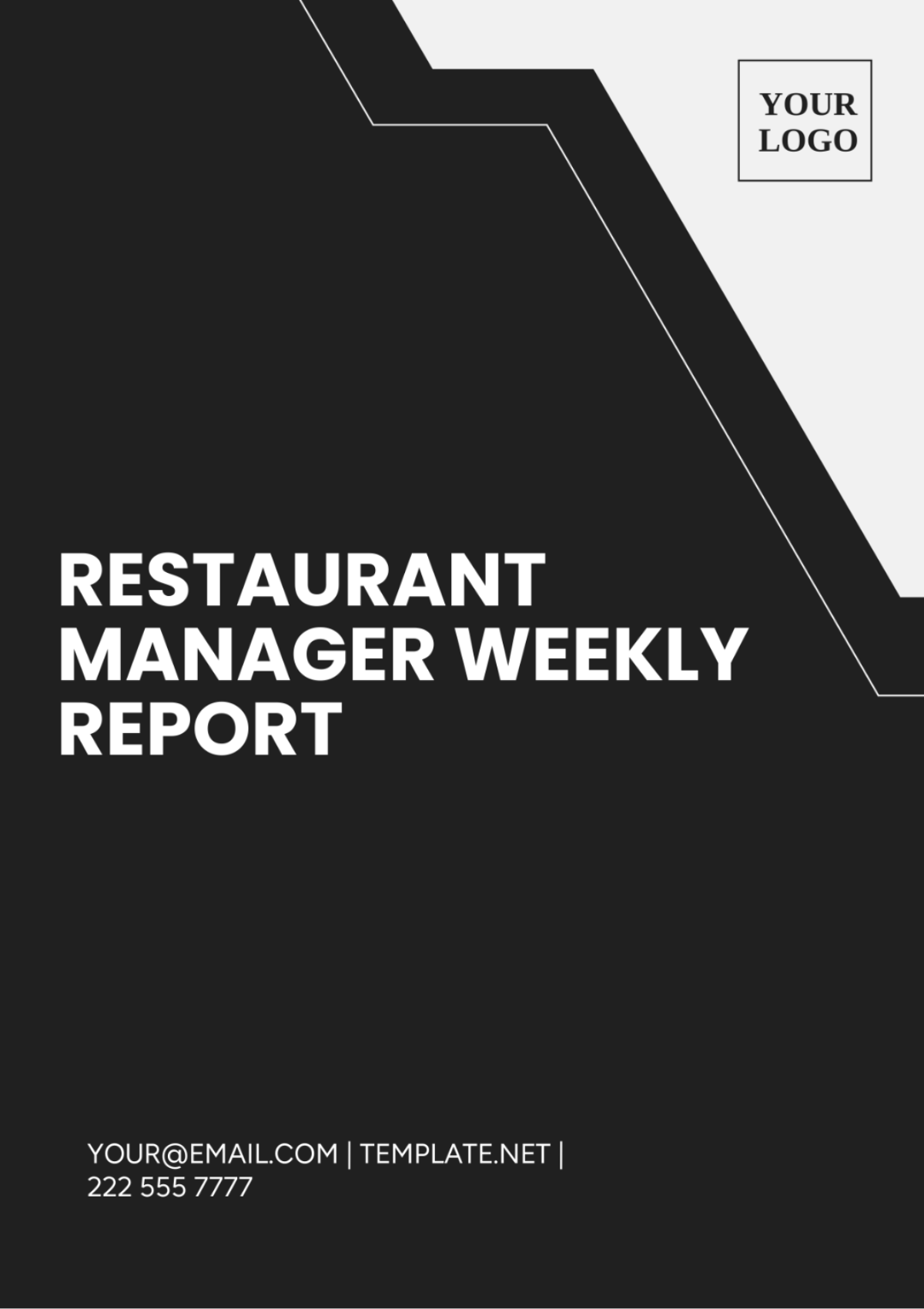
Prepared by: [YOUR NAME]
Company: [YOUR COMPANY NAME]
Date : [CURRENT DATE]
I. Executive Summary
In this section, [YOUR COMPANY NAME] provides a brief overview of the restaurant's performance over the past week. It highlights key metrics and trends to assist [RESTAURANT MANAGERS] in making informed decisions. The executive summary serves as a snapshot of the report, offering a quick glance at the restaurant's overall performance.
Key Performance Indicators (KPIs):
This subsection presents the most critical metrics such as total sales, average customer satisfaction score, labor cost percentage, and inventory turnover rate. [RESTAURANT MANAGERS] can quickly assess the restaurant's performance against set targets and benchmarks.
Highlights:
Here, notable achievements, challenges, and opportunities are summarized. [YOUR NAME] identifies areas of success and areas that require attention, providing insights to guide decision-making processes.
II. Methodology
The Methodology section outlines the approach used to gather and analyze data for this report. [YOUR NAME] describes the sources of data, such as sales reports, customer feedback surveys, and staffing records, and explains the techniques employed to derive insights and recommendations.
Data Collection:
[YOUR NAME] details the methods used to collect data, including automated systems, manual recording, and customer feedback mechanisms.
Data Analysis:
This subsection discusses the analytical techniques applied to interpret the data, such as trend analysis, comparative analysis, and correlation studies.
III. Findings
In the Findings section, [YOUR NAME] presents the key insights derived from the data analysis. This section provides a deeper understanding of the restaurant's performance across various aspects, including sales, staffing, and customer satisfaction.
Sales Performance: [YOUR NAME] highlights trends in sales figures, identifies top-performing menu items, and evaluates the effectiveness of promotional activities.
Staffing Analysis: This subsection discusses labor utilization patterns, identifies peak hours of operation, and assesses staffing efficiency metrics.
Customer Feedback: [YOUR NAME] summarizes common themes in customer feedback, highlighting areas of strength and areas requiring improvement.
IV. Recommendations
Based on the findings, the Recommendations section outlines actionable strategies to address areas of improvement and capitalize on opportunities. [YOUR NAME] provides specific suggestions tailored to enhancing sales performance, optimizing staffing levels, and improving customer satisfaction.
Menu Optimization: [YOUR NAME] recommends menu adjustments based on sales data and customer preferences to maximize profitability and customer satisfaction.
Staffing Optimization: This subsection provides recommendations for optimizing staffing levels, scheduling practices, and training programs to improve operational efficiency and reduce labor costs.
Customer Experience Enhancement: [YOUR NAME] suggests initiatives to enhance the overall customer experience, such as staff training programs, service enhancements, and facility improvements.
V. Conclusion
In conclusion, [YOUR COMPANY NAME] summarizes the key findings and recommendations outlined in the report. [RESTAURANT MANAGERS] are encouraged to leverage the insights provided to make data-driven decisions and drive continuous improvement in restaurant operations. [YOUR NAME] emphasizes the importance of ongoing monitoring and evaluation to ensure the effectiveness of implemented strategies.
- 100% Customizable, free editor
- Access 1 Million+ Templates, photo’s & graphics
- Download or share as a template
- Click and replace photos, graphics, text, backgrounds
- Resize, crop, AI write & more
- Access advanced editor
Elevate your restaurant management game with Template.net's Restaurant Manager Weekly Report Template. This editable and customizable tool streamlines your operations effortlessly. Crafted for efficiency, it's seamlessly editable in our Ai Editor Tool, ensuring precision and professionalism in every report. Stay ahead with detailed insights and effortless customization.
You may also like
- Sales Report
- Daily Report
- Project Report
- Business Report
- Weekly Report
- Incident Report
- Annual Report
- Report Layout
- Report Design
- Progress Report
- Marketing Report
- Company Report
- Monthly Report
- Audit Report
- Status Report
- School Report
- Reports Hr
- Management Report
- Project Status Report
- Handover Report
- Health And Safety Report
- Restaurant Report
- Construction Report
- Research Report
- Evaluation Report
- Investigation Report
- Employee Report
- Advertising Report
- Weekly Status Report
- Project Management Report
- Finance Report
- Service Report
- Technical Report
- Meeting Report
- Quarterly Report
- Inspection Report
- Medical Report
- Test Report
- Summary Report
- Inventory Report
- Valuation Report
- Operations Report
- Payroll Report
- Training Report
- Job Report
- Case Report
- Performance Report
- Board Report
- Internal Audit Report
- Student Report
- Monthly Management Report
- Small Business Report
- Accident Report
- Call Center Report
- Activity Report
- IT and Software Report
- Internship Report
- Visit Report
- Product Report
- Book Report
- Property Report
- Recruitment Report
- University Report
- Event Report
- SEO Report
- Conference Report
- Narrative Report
- Nursing Home Report
- Preschool Report
- Call Report
- Customer Report
- Employee Incident Report
- Accomplishment Report
- Social Media Report
- Work From Home Report
- Security Report
- Damage Report
- Quality Report
- Internal Report
- Nurse Report
- Real Estate Report
- Hotel Report
- Equipment Report
- Credit Report
- Field Report
- Non Profit Report
- Maintenance Report
- News Report
- Survey Report
- Executive Report
- Law Firm Report
- Advertising Agency Report
- Interior Design Report
- Travel Agency Report
- Stock Report
- Salon Report
- Bug Report
- Workplace Report
- Action Report
- Investor Report
- Cleaning Services Report
- Consulting Report
- Freelancer Report
- Site Visit Report
- Trip Report
- Classroom Observation Report
- Vehicle Report
- Final Report
- Software Report
